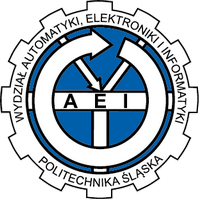Start - MGR EiT SPEC – Microelectronics and Nanotechnology (ME)
Specialtiy: Microelectronics and Nanotechnology
Electronics and Telecommunications, full-time second-cycle studies
Characteristics of the specialty
Education at the specialization in Microelectronics and Nanotechnology is conducted primarily by involving students in research and development work carried out successively by the Microelectronics and Nanotechnology team. It prepares students for the preparation of MA theses in the following subject areas:
- Research on technology and characterization of sensory layers based on doped SnO2 nanostructures - characterization of these layers, research on sensor response, optical tests.
- Research on the technology and characterization of single-junction silicon photovoltaic cells: production of the cell emitter layer, production of the layer forming the back BSF return field, production of the front collecting electrode
- Research on manufacturing technology using the process of chemical metallization of thin layers of modified Ni-P alloys with the application of ultra-precise film resistors and conductive layers.
- Development of IT tools for modelling phenomena occurring in micro and nanoelectronic structures, simulation of technological processes allowing for prediction of the properties of manufactured materials and test micro and nanoelectronic structures
Student profile
The specialization is intended for people interested in the latest achievements of modern electronics, including technological and measuring works, in particular research on the production technology and characterization of materials for electronics. It is desirable that the student has a predisposition and a passion for experimental work and the ability to plan and conduct experiments. When undertaking work in the field of computer modelling, it is necessary to be able to describe real processes or phenomena through mathematical formulas.
Prerequisites
A student of the Microelectronics and Nanotechnology specialization should have basic knowledge of physics, including selected areas of solid state physics, electronic components and microelectronic techniques. Before starting the study, the student should be prepared in the field of mathematical analysis, algebra, numerical methods, information technology and the basics of computer programming.
It is assumed that the student is able to obtain information from the literature on the current state of the electronics industry and the latest development trends
Issues
As part of the Microelectronics and Nanotechnology specialization, students acquire knowledge in the field of nanotechnology of semiconductor materials and structures, including sensors produced by microelectronic techniques and photovoltaic structures, with particular emphasis on silicon-based photovoltaic cells. An important subject area are issues related to the methods of micro and nanoelectronic materials characterization. Students are familiarized with modern diagnostic methods of microelectronics and nanotechnology. The next block of issues faced by the student concerns the modeling of phenomena and structures in microelectronics and nanotechnology. During the course, issues related to the assembly technology of electronic components are also discussed
Specialization subjects
- Nanotechnology of semiconductor materials and structures
- Microelectronic sensors
- Photovoltaics
- Diagnostic methods of microelectronics and nanotechnology
- Modelling of phenomena and structures in microelectronics and nanotechnology
- Technology of assembly of electronic components
Graduate profile
A graduate of the Microelectronics and Nanotechnology specialization should have an understanding of modern technologies for the production of semiconductor structures, including sensor and photovoltaic structures, and passive elements such as ultra-precise resistors and knowledge of assembly techniques for electronic components.









